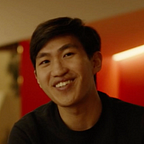Noteworthy Start
This post is part of a series where we’ll explore how technology can change our perspective by writing and designing novel products every week this year.
1/50
—
One of the most fascinating parts of design is how the tiniest details can engender different behavior. For example, when Twitter changed their favorite button to likes, they saw a 28% increase in feature usage. Nevermind the fact that the tiny Like button itself probably modified our social fabric forever.
Right now most note taking app focuses on showing you previous notes rather than creating a note. One can argue that in this design, from the get-go, there’s a barrier to adding new ideas: having to find the “create” button.
How awkward would it be to always have to see your photo gallery before capturing a photo? When you want to take a photo, time is of the essence — you want to create immediately. Just like Kodak moments, ideas are fleeting. What if note taking apps opens to creation?
Capturing Ideas
We’ll first optimize the note app for capture by opening directly to the composition page and opening the keyboard automatically. This way, all the users have to do is open the app, then start typing on their keyboard.
Because the app icon in the launcher, and the keyboard is universal to the phone, the user doesn’t have to re-contextualize or think about how the app looks and which button to press.
Additionally, typing is not always the fastest way to capture your ideas. Because we’re on a mobile device, we can rely on other sensors to help us. We can take a photo of the situation that brought this idea, record the idea through audio if typing is currently inconvenient, record the GPS data to put locality on the note, draw to illustrate a complex diagram, etc..
We can further increase the speed of recording ideas by automating multimodal entry. The moment the app is opened, the camera, microphone, and GPS start recording. But, it is only saved if the user chooses to capture it. By doing this, we move the barrier of pressing a button after the creation has already happened.
Filing Ideas
When you’re in a rush, you can quickly close the app and move on with your day. But hopefully, you’re not always in a rush.
If you’re like me, saying that you will sort your notes later means you will never sort them and your memory retrieval will be abysmal. We want to prevent this, since it will make accessing your notes feel like a chore — negating any gain we made in the creation process.
Rather than navigating to the list of notes saved, the done button gives the user a chance to file their notes. Having a complete page to sort your notes allows us to have bigger buttons, simpler UI, and therefore more processable. Big is smooth, smooth is fast.
Another way we can speed up the user’s ability to navigate through the app is through persistence. When the user presses done, the app changes screens, but the keyboard stays. By doing so, users can fluidly file their new notes, without having to visually orient themselves.
In many cases, you will be taking multiple notes around the same topic because you’re being inspired by your surroundings. We can increase the efficiency of filing, by using previous information to infer future actions.
Recollecting Ideas
Eventually the user will need to find the notes that they’ve captured. Though we aimed for increasing idea capture speed, we need to think over the entire lifecycle since capturing ideas is not the goal of a note taking app, but rather idea recollection.
To access previous notes, the user swipes right anywhere. The infinite target area and global availability allows the user to do it without processing what’s on the screen. This way, even though it is a secondary screen, the user can always get to it without incurring brain cycles.
Just as in the filing stage, the keyboard stays persistent. In this case, it allows users to quickly search for previous notes or tags.
But like additional sensors, there are universal actions that we can create shortcuts for. Having a filter sidebar helps users find notes without typing. In this example we use sensor data as categories. But since different users have different filing style, we provide the ability to create a shortcut for their currently typed query.
Finally, we provide a list at the bottom of this screen for their recent notes. Though categories and searches allow users to quickly find something they want, recency is nevertheless a good predictor of things we want to access.
TL;DR
We reoriented the experience of note taking to start with the creation process, making it frictionless to capture ideas and therefore more likely to happen. We encourage users to file their notes appropriately so their notes continue to be accessible with speed. Finally, we made it convenient to access old notes through a gesture and tailored search tools.
—
Don’t forget to subscribe to get notified when the next installment comes out!
Get the Invision Studio source file!
Cover photo by JESHOOTS.COM on Unsplash
